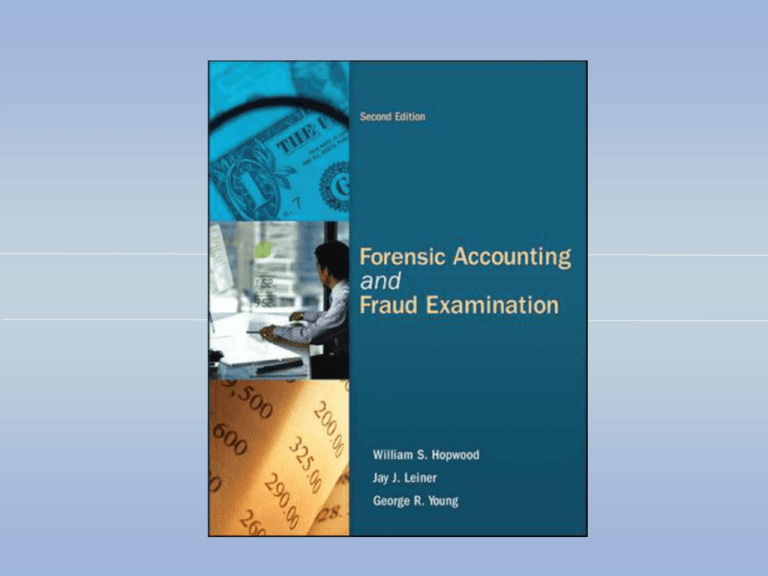
4-1
4-2
04
Fundamentals II - The
Auditing Environment
McGraw-Hill/Irwin
Copyright © 2012 by The McGraw-Hill Companies, Inc. All rights reserved.
4-3
About Auditing
The
Auditing Environment
Auditing:
The process of gathering and evaluating evidence
about information to determine the degree of
correspondence between the information and the standards
used to prepare the information.
Demand
for Auditing (because business owners not directly
involved in the business)
Licensing
(state-based regulation for CPA’s)
Rule-Making
IIA)
Bodies (PCAOB, SEC, FASB, GASB, AICPA,
4-4
The Auditing Regulatory
Environment
International
Boards That Affect the Accounting Profession
(IIASB, IASB)
The
Audit (Auditors audit companies to determine whether
their financial statements (including footnotes) present the
companies’ financial position, results of operations, and
cash flows in accordance with the accounting basis (e.g.,
generally accepted accounting principles) specified in the
footnotes. )
4-5
Materiality and Risk
Materiality
and Risk
Materiality
(The magnitude of an omission or misstatement of
accounting information that, in the light of surrounding
circumstances, makes it probable that the judgment of a
reasonable person relying on the information would have been
changed or influenced by the omission or misstatement.)
preliminary judgment of materiality, allocation to segments
Risk
(Audit risk is the likelihood that the financial statements
will contain material misstatements after the auditor has
determined that the financial statements are free of material
misstatements. Inherent risk is the likelihood that an account
or class of transactions is materially misstated before
considering the effects of internal controls. Control risk is the
likelihood that the internal controls will not detect or correct a
misstatement in an account or class of transactions.)
4-6
Audit Reports
Audit
Reports
Standard
Unqualified Report
Unqualified Report with Modified Wording
Qualified Opinion Report
Adverse Opinion
Disclaimer Audit Report
Audit
Assertions
Presentation
and Disclosure
Rights and Obligations
Existence or Occurrence
Completeness
Valuation or Allocation
4-7
Evidence-Gathering
Procedures
Evidence-Gathering
Procedures
Confirmation
Observation
Physical
Examination
Reperformance
Analytical Procedures
Inquiry of the Client
Documentation
4-8
Types of Tests
Types
of Tests
Tests
of Controls
Substantive Tests of Transactions
Analytical Procedures
Substantive Tests of Balances
4-9
Sampling and the Audit
Process
Sampling
Sampling Risk
Sampling for Attributes
Sampling for Tests of Balances
The
Audit Process
Plan
and Design the Audit
Performance of Tests of Controls and Tests of
Transactions
Performance of Analytical Procedures and Tests of
Balances
Completion of the Audit and Issuance of the Audit
Report
4-10
The Audit of Internal Controls
The
Audit of Internal Controls over Financial Reporting
Design
Deficiencies
Auditor’s Evaluation Process
Reporting on Internal Control over Financial
Reporting
4-11
The Auditor’s Responsibility to
Detect Fraud
The
Auditor’s Responsibility to Detect Fraud
SAS
No. 99, Consideration of Fraud in a Financial Statement
Audit
The Profession’s Response to Fraud
4-12
Non-Audit Services
Other
Services
Review
Reports
on Specified Elements, Accounts, or Items on
Financial Statements
4-13
Other Issues and Functions
Other Issues
Special
Characteristics of Small Public Firms
Agreed-upon Procedures Engagements
Compliance Reports
How Small Public Companies Can Compensate
Prospective Financial Statements
Specialty Assurance Services
Compilation
Other Auditing Functions
Internal Auditing
Operational Auditing
Governmental
Auditing






